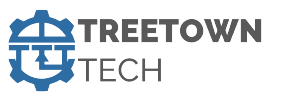“The fishermen know that the sea is dangerous and the storm terrible, but they have never found these dangers sufficient reasons for remaining ashore.”
~ Vincent Van Gogh
Lost at sea
Picture it — you’re in the middle of the ocean and your boat has become disabled. You have one signal flare gun with four aerial signals, each with a 7-second burn time. Your survival now depends on someone’s eyes looking at the right place within those crucial 28 seconds…
The Experienced Sailors
Two very experienced off-shore sailors, who have lived to tell of rescues, saw a gap in their rescue gear, especially their signaling gear. As successful Michigan entrepreneurs they saw a need and had a vision for a device that would stay on station, stay in the air for a much longer period of time, and most importantly let the person in distress know they are being seen.
This was the starting point for Yana SOS Inc. They had the experience in the market, they had a great idea which modern technology would enable, now they needed a partner.
The Treetown Tech engineers jump on board
Traditional signal flares have many downsides that make them less than ideal in a life-or-death situation. That’s why the folks at Yana SOS Inc decided to partner with the Treetown Tech engineers to innovate an electronic flying flare device with an LED strobe.
Such a device would increase the rate of successful search and rescue efforts for sailors lost at sea. The task was to design, iterate, and test the electrical and mechanical solutions that would fulfill all the requirements of a seaworthy and life-saving electronic flying flare.
The requirements: high performance, low cost
The key requirements we identified were:
- The flare must be deployed by the distressed person without difficulty.
- It must hover 100 feet directly above the launch point for at least 10 minutes.
- it should have a small form factor that is easy for a person to carry on a belt or in a bag
- It can double as a hand held flare for added value.
- It must be priced competitively with other sailing safety products.
The approach
Product development at Treetown Tech—especially with newly formed companies —is a collaborative effort. Operating with limited funds doesn’t result in limited innovation. We integrate our partners into the process to encourage customer discovery, pinpoint market needs, and provide help with financial planning.
Our goal was to work quickly through the technical development stage to produce a Minimum Viable Demo (MVD) that Yana could use to create early marketing materials. These proofs of concept would be invaluable in helping them to raise additional funds to take their product to market.
We started with conducting high level aircraft analysis, with a focus on brushless drives with high torque to weight ratio and reliability. We needed something with static thrust, high endurance, and a long enough battery life. And we needed it all to be packed into a space roughly the size of a slim water bottle.
Rapid prototyping and interaction were the name of the game while trying to match the MVD to Yana’s business needs. Using rapid 3D printed prototypes, we began the process of making-and-crashing-things (safely, of course.). With every new iteration and test, we learned how to optimize the design for better performance and fewer components. After dozens of rapid development cycles, we arrived at a battery-powered coaxial helicopter electronic flare MVD.
The demo that investors could believe in
By the end of our MVD development process, Yana had a physical prototype with proven feasibility that they could show investors. Because when it comes to getting investors on your side, showing is always better than telling.
Using their functioning MVD, Yana was able to show:
- A physical prototype of the product that can be seen, held, and operated
- A functional, flying alpha level airframe that demonstratesthe technological feasibility, which adds serious business value (a working demo is easier to invest in than an idea!)
- An impactful marketing video to expand their fundraising reach.
Like all of our engineering approaches, developing the Yana electronic flying flare relied on a healthy dose of trial-and-error. Thankfully, our engineers don’t mind making things crash.
In fact, we’re pretty sure some of them enjoy it.
